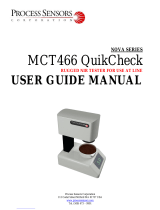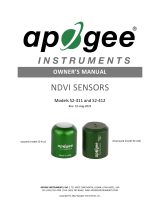Mavic 3M Image Processing Guide
https://ag.dji.com/mavic-3-m
Copyright © 2023 DJI All Rights Reserved 9
Step 2: Distortion correction
Distortion correction is a regular process in image processing. The Mavic 3M has parameters for
distortion correction in the metadata, which can be found in [Dewarp Data] in [XMP: drone-dji]. [k1,
k2, p1, p2, k3] are the polynomial coefficients for the correction, and fx, fy, cx, cy are the intrinsic
parameters of camera. These 4 intrinsic parameters and the 2 parameters obtained in the
vignetting correction step above (CenterX, CenterY) make up the camera matrix [(fx, 0,
CenterX+cx), (0, fy, CenterY+cy), (0, 0, 1)] for distortion correction. For more information on
distortion correction, please refer to the “undistort()” function in OpenCV.
https://docs.opencv.org/3.0-beta/doc/py_tutorials/py_calib3d/py_calibration/py_calibration.html
Please note that changing the camera matrix in the "undistort()" function with "newcameramtx"
should be avoided in order to obtain good results in subsequent steps.
Step 3: Alignment of the phase and rotation differences caused by different camera locations and
optical accuracy.
In the XMP[drone-dji] of each band image file, find [Calibrated HMatrix]. This item represents the
3x3 transformation matrix for projective transformation from the individual physical image plane to
the designed ideal image plane. Doing so is sufficient in correcting any differences in position and
rotation between images for different bands captured in hover mode. For more information on the
perspective transformation, please refer to the “warpPerspective()” function in OpenCV.
https://docs.opencv.org/4.0.1/da/d54/group__imgproc__transform.html#gaf73673a7e8e18ec696
3e3774e6a94b87
Step 4: Alignment of the difference caused by different exposure times.
Before aligning, we recommend smoothing the images using a filter such as a histogram smoothing
or a Gaussian filter, etc.
Either of the two alignment methods outlined below would work:
o Method 1. Apply an edge detection filter (ex. Sobel filter) to detect edge lines from the
two images that need to be aligned. Then, apply an alignment algorithm such as the
Enhanced Correlation Coefficient (ECC) Maximization to the images. For more
information on the ECC maximization algorithm, please refer to the following URL
https://docs.opencv.org/3.0-
beta/modules/video/doc/motion_analysis_and_object_tracking.html
o Method 2. A traditional way for alignment includes feature point detection and matching.
Feature point detection can be performed by using algorithms such as SIFT (Scaled
Invariance Feature Transform), AKAZE, etc. An alignment matrix can be computed by
using several pairs of matched feature points, and then applying the matrix to the to-be-
aligned images.












